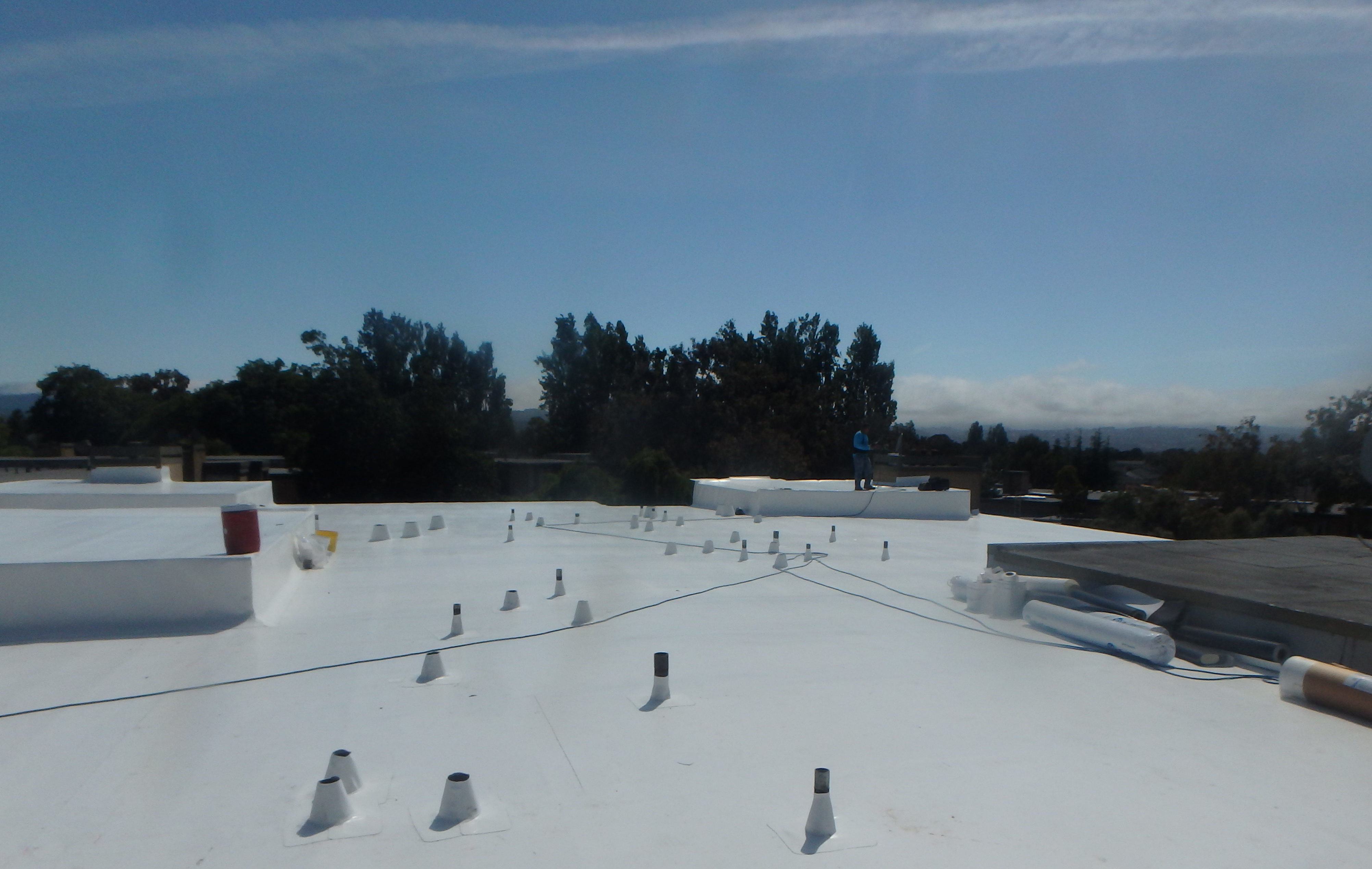How Cool is Your Roof?

When it comes to beating the summer heat, a cool roof is a valuable asset. Photo: Sierra Roofing & Solar ©2018
Everybody wants to be cool, and in more ways than one. Besides sporting stylish clothes and a laid-back attitude, we all want to maintain a comfortable body temperature. However, just as it’s tough to look cool in outdated attire, it’s difficult to stay cool when you have an outdated roof, especially during summer. The question is, how cool is your roof?
Problems with “Uncool” Roofs
These days, “old” and “cool” are seldom at odds—in fact, they’re frequently synonymous (hence the hipsters’ obsession with vintage fashion and music). However, when it comes to roofs, old is patently uncool, and never is this truer than on a hot day.
A roof is intended to be the home’s first defense against the outdoor elements, but when it comes to intense sunlight, many older roofs only do half of the job. They block the sun’s light just fine, but their dark color and non-reflective composition causes them to attract and absorb its heat. Over the course of a hot summer day, much of that heat gets transferred to the home interior. Depending on whether you have central air conditioning, this results in miserably muggy conditions or sky-high energy bills, neither of which is a desirable scenario.
The functional failings of inefficient roofs also pose problems on a broader scale. First, the increasing reliance on in-home air conditioning in California has raised concerns about elevated levels of energy consumption and greenhouse gas pollution. Second, inefficient roofs contribute to the urban heat island effect, a phenomenon whereby the proliferation of man-made structures attracts and traps heat, which raises the ambient temperature in urbanized areas by as much as 10 degrees. Furthermore, these localized “heat bubbles” bring about higher concentrations of airborne pollutants and contribute to the larger problem of global warming.
The Birth of Cool Roofing
To alleviate these problems, in 2005, the California Energy Commission instated minimum energy efficiency standards for both residential and non-residential roofs as part of its Title 24 building code. The standards focus on two basic roof properties:
- Solar reflectivity (the roof’s ability to reflect solar energy)
- Thermal emittance (the roof’s ability to radiate absorbed heat)
As per Title 24, these two properties are evaluated on a scale of 0-1, with a higher score representing higher performance. An alternate method of evaluation is the Solar Reflectance Index (SRI), which incorporates the two properties into a single value measured on a scale of 0-100. Required evaluation scores vary depending on roof type, class of building and climate zone. For example, steep-sloped roofs on low-rise residential homes in climate zones 10-15 must achieve a minimum solar reflectance of .20 and thermal emittance of .75, or an SRI of 16. If that sounds complicated, just be glad we aren’t covering “aged” solar reflectance (hint: there’s a lot more math).
In order to meet these stringent standards, the roofing industry has developed cutting-edge products aimed at improving performance. The official term for the approach is “cool roofing.” The basic strategy of cool roofing is to stop sunlight from heating up roof surfaces by using materials which naturally reflect rather than absorb heat. These materials (usually white or very light in color) range from reflective tiles and shingles to highly reflective paints, coatings, and sheet coverings.
Studies have shown that cool roofs can significantly improve the energy efficiency of homes located in warm climate areas. According to the U.S. Department of Energy, when used to replace a conventional roof, a cool roof can:
- Decrease annual air conditioning energy use by up to 15 percent in single-story buildings
- Maintain substantially cooler interior temperatures in buildings that don’t have air conditioning
- Decrease carbon emissions by reducing the need for fossil fuel-generated electricity to run air conditioners
- Potentially slow climate change by cooling the atmosphere
Cool Roofing Examples
As mentioned above, cool roofing utilizes a wide array of materials. One of the more unique examples is spray polyurethane foam (SPF). Rather than being composed of many small components (like shingles), a sprayed-on foam roof is a monolithic membrane that adheres to the existing roof and creates a highly insulative, waterproof barrier. Unlike traditional roof insulation, which merely reduces heat transfer, a polyurethane foam roof is able to completely block up to 100 degrees Fahrenheit of temperature transfer. Fun fact: SPF roofing has been around for more than 50 years!
While SPF is a good solution for flat-roofed buildings, when it comes to steep-sloped structures, its white, foamy appearance can create an eyesore. The same goes for many reflective roofing products, which rely on light colors for natural solar reflectance. Fortunately, roofing manufacturers have addressed this issue by developing products that appear traditional but have solar-reflective qualities. One example is Presidential Solaris® Gold by CertainTeed, a solar-reflective asphalt roofing shingle that has the appearance of an authentic wood shake. With specially colored granules designed to reflect sunlight, Presidential Solaris shingles offer a 25 percent solar reflectivity, so homeowners can be Title 24-compliant without sacrificing aesthetics.
From Urkel to Fonzie
So, how cool is your roof? If it’s still sporting the same asphalt shingles you had installed 30 years ago, it’s likely the energy efficiency equivalent of Steve Urkel. If this is the case, it’s time for a roof makeover. Replace those old shingles with a product that will keep the heat out and your air conditioning bills low. When installed in accordance with Title 24 standards, your roof will be a regular Fonzie—and you’ll feel pretty cool, too.
Sources:
California Energy Commission: Cool Roofs (PDF)